This piece was updated on Oct. 31 to more accurately reflect estimates from Goldman Sachs on the cost of building data-center-related generation and transmission infrastructure. It was further updated on Nov. 3 to include additional context on recent studies and commentary regarding AI data centers’ impact on electricity demand and rates.
Electricity rates across the country have increased 30% since 2020 and are rising at twice the rate of inflation, particularly in areas where large data centers are operating and under construction. In Virginia, a hub for data center development, Dominion Energy has petitioned the state utility commission to raise base rates by 15% over the next two years, and a company spokesman projected that the average residential utility bill will increase by 50% by 2039 due to new data center openings. In Columbus, Ohio, the average residential rate is set to increase by $27 per month, and the Chicago Sun Times reported on July 22 that Commonwealth Edison is raising rates by 11% this year. According to Bloomberg news, “wholesale electricity costs as much as 267% more than it did five years ago in areas near data centers. That’s being passed on to customers.”
Soaring electricity prices is only one problem. The public is becoming increasingly aware of the other downsides of the huge data centers required to provide artificial intelligence (AI) services, including water consumption, noise pollution, lack of long-term job creation, and use of polluting fossil fuel generating plants. This piece focuses, however, on policy measures needed to meet the rising demand for AI energy while protecting ordinary ratepayers from paying the extra costs associated with AI data centers.
The unprecedented demand
Why is the data center boom causing electric utility bills to go up for residential customers? At one level it is basic economics—prices go up when demand exceeds supply. But the current situation is more complicated and has the potential to dramatically raise rates across the U.S. electric grid because the increase in power demand by data center developers is at a scale not previously seen in the United States. There are currently as many as five data centers under construction in the U.S. that will consume at least one gigawatt (GW) of power—an amount sufficient to power 750,000 homes. But these do not even include data centers currently proposed but not under construction. A proposed Meta data center in Louisiana will cover an area equal to 70 football fields, require a $3 billion upgrade to the region’s electricity infrastructure, and consume as much as 2.2 GW of power when in operation. On top of that, data center developers are asking utilities to provide power within two to three years, when the construction of new power plants and transmission lines commonly take as long as a decade to plan, permit, and construct. And all this investment might never pay off if fears of an AI bubble prove to be accurate.
This unprecedented increase in data center demand for electric power is challenging in three respects. First, the sheer magnitude of power required and its concentration in a few geographic locations across the country make it difficult to manage and sustain. As Pacific Gas & Electric executive Mike Medeiros explained, “[t]he size and the scale of what we’re seeing now is unlike anything we’ve seen.” Depending on the strength of demand for AI services, Bloomberg projected in April 2025 that “US power demand from data centers might grow 4x by 2032.” The International Energy Administration issued a report in April 2025 estimating, in its base case, that data center demand for energy in the U.S. will increase from 180 terawatt-hours (TWh) of electricity in 2024 to 420 TWh by 2030, an increase of 130%. A recent Wood Mackenzie report identified 64 gigawatts of confirmed data-center-related power projects currently on the books with another 132 gigawatts potentially to be developed. Sixty-four gigawatts is enough to power 56 million homes—almost twice the population of the 15 largest cities in America. Beyond their inability to plan and construct infrastructure on the scale required, utilities do not have the financial resources to do so.
Second, the timing of data center developer demand for power is inconsistent with the pace at which utilities can supply it. The time required to plan, permit, and construct new large generating and transmission facilities is in the range of eight to 10 years, but data center developers are asking for power to be delivered in two to three years. For example, in January 2025, OpenAI announced its Stargate initiative to construct data centers devoted to AI over the next four years at a cost of $500 billion. In March, Bloomberg reported that the first data center complex for this venture is planned to be completed by mid-2026 with a capacity of 1.2 gigawatts of power, and in September OpenAI announced plans for an additional four data centers with a capacity of 7GW of power. As Brian Janous, the former vice president of energy at Microsoft who now leads Cloverleaf Infrastructure, explained, “[w]here we’re at today is in a world of constraint. It’s not just land. It is land plus a clear line of sight to power in that same sort of 18 to 24 month time horizon.” The time frames for demand and supply simply do not meet.
Third, the demand for electric power is challenging because of its uncertainty. The Wall Street Journal reports that “utilities see a massive opportunity in AI but realize that many proposed data-center projects will never be built.” According to Astrid Atkinson, a former Google senior director of software engineering, “[c]onservatively, you’re seeing five to 10 times more interconnection requests than data centers actually being built.” That is because developers are simultaneously filing power demands with multiple utilities as they negotiate with states and localities to obtain tax and other incentives for potential projects. The potential is for utilities to be stuck with cancelled projects when developers decide to locate elsewhere.
There also is increasing speculation that the AI “boom” is in fact an economic “bubble” that has the potential to burst with ripples across the U.S. economy. As Paul Krugman has written, “many people, myself included, have drawn parallels between the current AI frenzy and the telecoms boom and bust of the late 1990s—an alarming parallel, because the telecom bust led to years of elevated unemployment.” And even if the AI bubble does not burst, utilities are constructing large and expensive gas-generating plants that typically operate for 30 years to supply data centers that have 10- or 15-year contracts to purchase that power.
Rate protection for residential non-data center ratepayers
There is an emerging consensus that protecting non-data center ratepayers from massive electric rate increases will require utilities to establish a separate tariff structure for data centers users. The problem, as energy analyst Mike Jacobs described it, is that the “costs for both the new power plants and the transmission—even the wires to the data centers’ buildings—are paid for collectively by all the customers of the respective host utilities.” A new separate tariff paid for by data center users would address this problem by incorporating and isolating the costs associated with serving data centers users, including the costs associated with new generating facilities, high-power transmission links that tie data centers to the grid, and necessary upgrades to the distribution infrastructure. Non-data center residential and business consumers would pay rates based upon a separate tariff that does not include the costs associated with the growth in data-center-related power consumption. It is hard to argue against the proposition that data centers should cover the cost of the power they consume. Even the data center coalition and companies publicly support that position. As Bobby Hollis of Microsoft’s energy procurement team said, “[w]e don’t want to see other customers bearing the cost of us trying to grow.” But the devil is in the details—and there are a lot of details that, if mishandled, could lead to higher residential electric rates that effectively subsidize the largest and richest companies in the world and their customers.
The most clear-cut example of how serving data centers can drive up residential rates involves power generation. Data center developers are turning to natural gas generating facilities because they are faster to build and easier to locate than wind, solar, nuclear, and other types of energy generation facilities. For example, Entergy, a Louisiana-based utility, recently announced that it will be spending $3.2 billion to construct three gas plants totaling 2.3 GW to serve Meta’s new $10 billion AI data center program. The problem is that the cost of new combined cycle gas-generating facilities is by far the highest by megawatt-hour ($115 to $221 per MWh) of current utility-scale alternatives. In many cases, these gas-generating facilities cost more than double utility-scale solar ($24 to $96 per MWh), onshore wind ($24 to $75 per MWh), offshore wind ($72 to $140 per MWh), nuclear ($141 to $221 per MWh) and coal ($68 to $166 per MWh). On top of that, the price of the natural gas necessary to operate these plants is on the rise, reflecting the cost of upgrading natural gas pipelines and increased demand. Between January 2024 and January 2025, the price of natural gas increased 14.6%.
Transmission lines are a second major cost of serving data centers that in most cases are currently paid for by all users of the system. The Union of Concerned Scientists has estimated $4.3 billion of utility costs in 2024 alone to extend existing transmission lines to serve data centers, with many costing between $25 million and $100 million. Substations are another cost of expanding the grid to serve data centers. Dominion Energy, which historically built about two new substations a year, currently has 50 under construction in order to update grid infrastructure to accommodate its 53 discrete data center customers in “data center alley” in northern Virginia outside of Washington, D.C. and across its service territory. These transmission-related costs are key drivers behind Dominion Energy’s petition described above to raise base rates by 15% over the next two years and the projected 50% increase in average residential bills by 2039.
Rather than provide data centers with discounted “industrial” rates for electricity as a location incentive, state regulatory commissions need to structure separate tariffs for large data center users that fully reflect the generation, transmission, and related costs of providing the service.
Options for policymakers
In addition to establishing separate tariff structures for data center users, policymakers need to consider a range of options to protect utilities from the financial risk related to the uncertainty of data center demand. One option would be to require data center users to prepay or frontload the costs for the infrastructure they require. Quite simply, utilities do not have the resources necessary to finance upfront the $1.4 trillion cost of building the data-center-related generation and transmission infrastructure that Goldman Sachs estimates will be required by 2030. Unlike utilities, data center developers have the balance sheets and economic incentives to finance this new generating and transmission capacity. Amazon, Meta, Microsoft, and Alphabet are collectively worth eight times the value of the entire S&P 500 Utility Sector. Moreover, instead of raising rates on all utility users, these costs can be factored into the cost of AI services to be provided, and the competitive need to build new data centers as quickly as possible provides the economic incentive for tech companies to pay the cost and assume the risk that comes with a new technology.
The financial risk for utilities includes the likelihood that some of the companies seeking energy to power their data centers will not succeed and so will be unable to pay ongoing costs of the facilities constructed to meet their demand. This means other policy measures beyond separate tariffs and upfront capital contributions by developers will be needed to insulate utilities and residential ratepayers from the uncertainty risk associated with data center development. Additional measures can include the use of take-or-pay contracts and long-term commitments. For example, the Public Utilities Commission of Ohio just approved a compromise tariff proposed by American Electric Power (AEP) that would require data centers with loads over one GW and mobile data centers over 25 MW to commit to 10-year electric service contracts and pay minimum demand charges based on 85% of their contract capacity, up from 60% under the utility’s current general service tariff. The state of Texas recently enacted legislation that, among other reforms, requires data centers and other new large users to fund the infrastructure necessary to serve their needs. While it is customary to spread the cost of new facilities across the user base of a utility, Texas legislators determined that the demands data center developers are placing on utility systems across the country are sufficiently extraordinary to justify tariffs that fully allocate the costs of new facilities to those developers. A similar effort is underway in Virginia, which has already seen the start of residential rate increases because of data center development. One new initiative is to require data centers to pay the full cost of new distribution infrastructure, including substations and transmission lines, within the first four years of service.
It is important to understand the driving forces behind the unprecedented increase in demand for electric power. But more importantly, policymakers and regulators at the federal, state, and local level need to figure out how to protect residential and other non-data center customers from footing the bill on behalf of the world’s richest corporations. Ohio, Texas, and Virginia are among the leaders in establishing policies that are designed to protect non-data center consumers. But most jurisdictions are only at the start of that process. Much needs to be done and, as Eliza Barclay of the New York Times writes, “it’s just the beginning.”
November 3, 2025 addendum
This section was added to answer questions related to a recent study on rising electricity rates.Recent articles from The Washington Post and The New York Times rely on a study from researchers at Lawrence Berkeley National Laboratory and the Brattle Group to imply that fears of ratepayer impact from AI power demands are unfounded. The study suggests that from 2019 to 2024 there was excess capacity in the utility industry so that new large load customers could spread existing fixed costs over a larger consumer base, thereby putting downward pressure on electricity prices.
This conclusion, even if accurate about the past, cannot be projected into the future of AI energy demand. The study does not take into account the astonishing increase in AI capital expenditures on data centers, which as economic commentator Paul Kedrosky noted, have increased 10 times over the past three years and will reach $312 billion in 2025—approximately 1% of GDP. In June 2025, Wood Mackenzie announced that it is now tracking 134 GW of proposed data centers across the U.S., up from 50 GW in June 2024. It is not credible that today’s utility companies could provide the electricity needed for these AI data centers out of excess capacity. And the study makes no such claim. Ryan Hledik, one of the authors of the study, agreed in an interview on PBS that utilities are running into capacity constraints in attempting to meet AI energy demands and those incremental costs could increase rates for other customers. In the same interview, Hledik said he sees utilities adopting “new rate structures specifically for large customers like data centers” to protect ordinary ratepayers from paying for incremental AI data center energy costs.” The conclusion that many observers took from the study—that AI data centers will put downward pressure on electricity prices going forward—is simply wrong.
-
Acknowledgements and disclosures
Amazon, Google, Meta, and Microsoft are general, unrestricted donors to the Brookings Institution. The findings, interpretations, and conclusions posted in this piece are solely those of the authors and are not influenced by any donation.
The Brookings Institution is committed to quality, independence, and impact.
We are supported by a diverse array of funders. In line with our values and policies, each Brookings publication represents the sole views of its author(s).
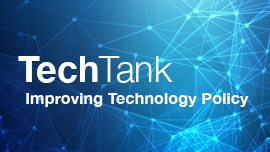
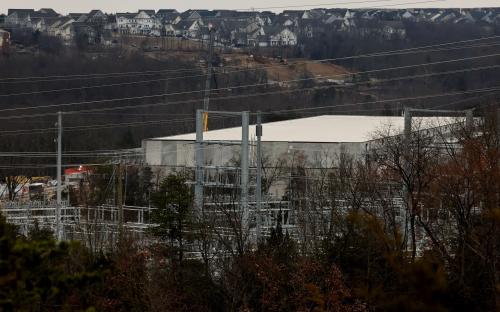
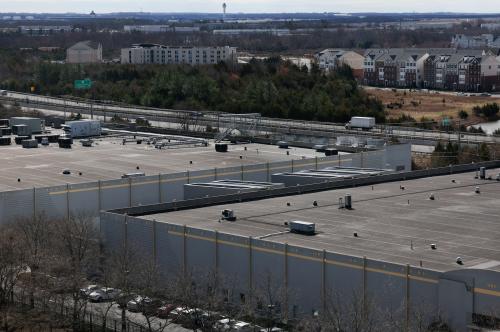
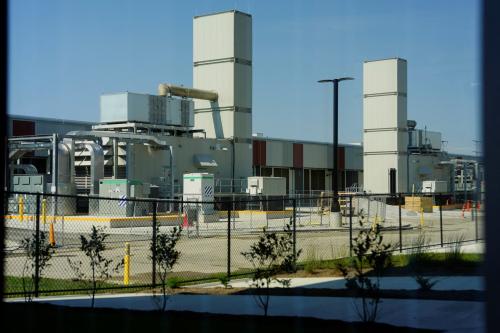


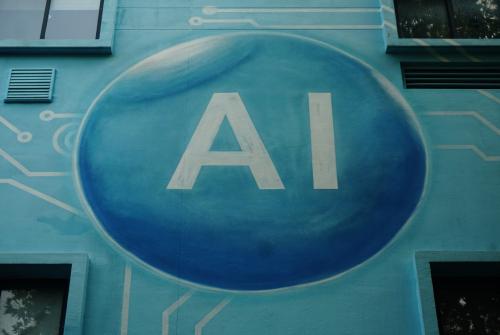

Commentary
Boom or bust: How to protect ratepayers from the AI bubble
October 30, 2025